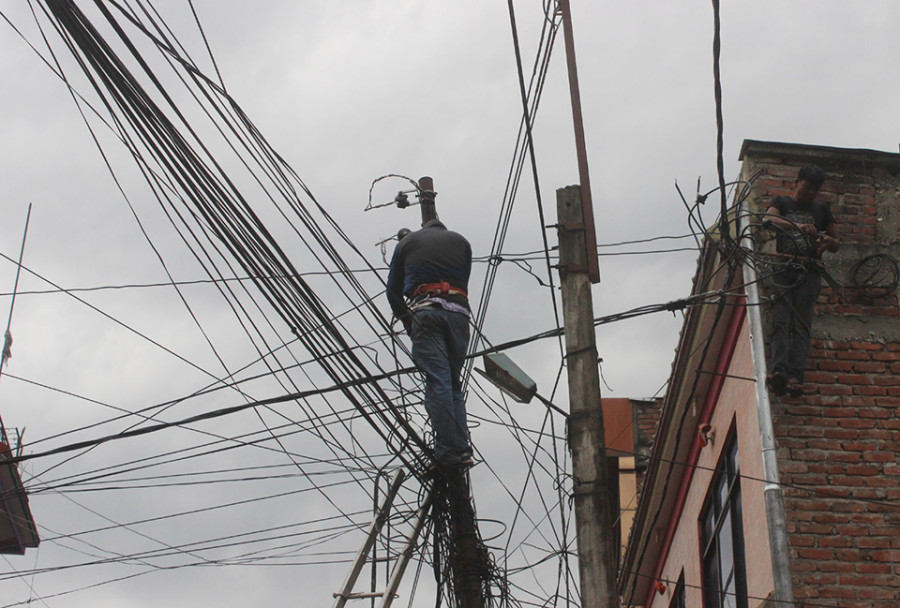Gandaki Province
42,811 wooden poles in use for power transmission in Gandaki Province
The provincial government plans to replace them all with metal or concrete poles in four years, but the work has not gained pace.
Agandhar Tiwari
In the current year’s policies and programmes, the Gandaki provincial government revealed its plan to replace wooden utility poles with metal and concrete ones. But all the 42,811 wooden utility poles across the province are still in use, according to Teknath Tiwari, chief at the Gandaki Provincial Office of Nepal Electricity Authority.
The provincial government aims to execute its plan within four years but is yet to initiate the process.
At the beginning of the fiscal year, the government had declared its plan to procure metal electricity poles to replace 14,500 poles in the first phase but it has not invited bids for the same. According to the plan, the Nepal Electricity Authority will remove the wooden poles after the provincial government procures metal poles. The funds for the project is to come from the province’s coffers. “However, the provincial government has not released the necessary budget yet,” said Tiwari.
The provincial Ministry of Physical Infrastructures Development and the utility had signed an 11-point agreement to “illuminate” the entire province. The Gandaki Provincial Office of the authority had estimated that around Rs 3.13 billion would be needed to replace wooden poles and expand the grid in the then Gandaki and Dhaulagiri zones. According to Tiwari, Rs 1 billion will be spent on just the replacement process.
Most of the 42,811 wooden poles are in a dilapidated condition, posing a serious threat to people and households.
Shrawan Khanal, information officer at the ministry, said they plan to purchase 9,450 metal electricity poles in the current fiscal year. “We will soon start the tender process,” said Khanal, adding that there was no budget allocated by the provincial government for replacing wooden poles in Kaski and Tanahun last fiscal year.
Gorkha has 11,481 wooden poles, which is the largest number in the province and Mustang has 98 wooden poles, the minimum. In Parbat, there are around 4,000 wooden utility poles in active use. Lalit Narayan Chaudhary, chief at the Parbat Distribution Centre of the National Electricity Authority, said they aim to start and complete the replacement process by the end of the current fiscal year.
“Some of the local units have also started purchasing metal poles with their internal budget,” said Chaudhary, adding that his office is also starting the process to purchase 1,200 poles. Last fiscal year, the Parbat Distribution Centre of the electricity authority had replaced 1,100 wooden poles in the district.
Kamal Prasad Bhusal, chairperson of Bihadi Rural Municipality in Parbat, said they plan to replace all of the wooden utility poles with internal resources in the current fiscal year itself.
“Most of the wooden poles are in such a condition that they may collapse anytime and cause supply disruption and short circuit. The budget from the provincial government is yet to come so we will use our own funds to expedite the process,” said Bhusal.




 21.12°C Kathmandu
21.12°C Kathmandu.jpg)











